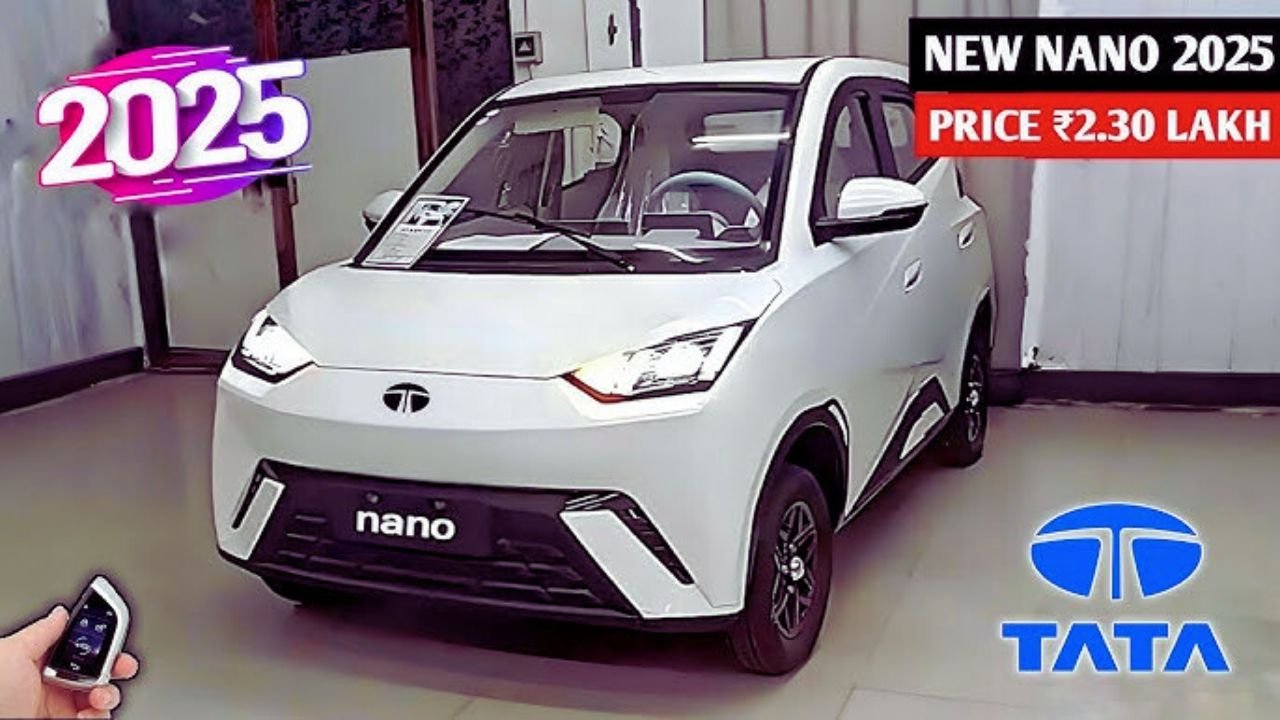The Tata Nano, once hailed as India’s “people’s car,” is rumored to make a bold comeback in 2025, blending retro charm with modern features. With bike-like pricing, impressive mileage, and a stylish redesign, it’s set to appeal to urban commuters, students, and budget-conscious buyers. This review explores its expected specs, price, and appeal, comparing it to the Yamaha MT 15 V2, in a concise 500-600 words. Note: As Tata Motors hasn’t officially confirmed the 2025 Nano’s launch, details are based on industry speculation and recent reports.
Why It’s Generating Buzz
The original Nano (2008-2018) was iconic for its ₹1 lakh price but faced challenges with safety perceptions and low sales. The 2025 Nano aims to revive this legacy with a sleek, aerodynamic design featuring LED headlights, a bold grille, chrome accents, and 14-inch alloy wheels, per reports. Its compact size (3,099mm long, 1,495mm wide, 1,652mm high) and modern look rival the Yamaha MT 15’s sporty streetfighter vibe, appealing to young buyers. Social media posts on X call it a “game-changer” for its affordability, with petrol, CNG, and electric variants catering to diverse needs. Unlike the MT 15, a 155cc motorcycle for thrill-seekers, the Nano is a four-seater hatchback offering car-like comfort at a similar price point.
Expected Features and Performance
The 2025 Nano is expected to offer multiple powertrains:
- Petrol/CNG: A 1.0L turbo petrol or 1.2L bi-fuel engine (petrol+CNG) producing ~72 hp and 96 Nm, paired with a 5-speed AMT. Claimed mileage is 35-40 kmpl (petrol) or 36 km/kg (CNG), competitive with the MT 15’s 45-62 kmpl (petrol, ~₹2/km). The CNG option keeps running costs low (~₹2-3/km), ideal for city driving.
- Electric (Nano EV): A 40 kWh lithium-ion battery with a 200-300 km range, delivering ~35-45 hp. Fast-charging could achieve 80% in under an hour, per Smartprix.
The interior surprises with a 7-10-inch touchscreen (Android Auto/Apple CarPlay), digital cluster, automatic climate control, and soft-touch materials. Safety includes dual airbags, ABS with EBD, a rear camera, and side impact beams, addressing past concerns. Its 110L boot (expandable to 350L) and 15L fuel tank (24L in some variants) enhance practicality, outpacing the MT 15’s minimal storage. The Nano’s front-wheel-drive and light weight (~700 kg) ensure nimble handling, though its 180mm ground clearance suits urban roads better than highways.
Price and Variants
The Nano 2025 is expected to launch at Auto Expo 2025 (January 18), with prices:
- Petrol/CNG: ₹3-4 lakh (ex-showroom), on-road ~₹3.5-4.5 lakh, per wheel4world.com.
- Nano EV: ₹5-7 lakh (ex-showroom), on-road ~₹6-8 lakh, potentially lower with EV subsidies, per Cars24.
EMIs for a ₹4 lakh loan (10% down, 9% interest, 5 years) start at ~₹8,400/month, per CarDekho’s calculator. The MT 15 V2 (₹1.70-1.75 lakh ex-showroom, ~₹1.99-2.06 lakh on-road) is cheaper, with EMIs ~₹3,131/month, but it’s a motorcycle, not a car. The Suzuki Access 125 (₹81,700-₹94,500) is even more affordable but lacks the Nano’s four-seater capacity.
Comparison to Yamaha MT 15 V2
The MT 15 V2, with its 155cc engine (18.1 bhp, 14.1 Nm), offers thrilling performance, 56.87 kmpl mileage, and features like ABS and Bluetooth. It’s ideal for solo riders, costing ~₹0.04/km (petrol at ₹100/L), similar to the Nano’s CNG variant. However, the Nano’s cabin, weather protection, and safety features (airbags, ABS) make it better for small families or commuters needing comfort. The MT 15’s firm seat and limited pillion space can’t match the Nano’s practicality, though it excels in sporty dynamics.
Verdict
At ₹3-7 lakh, the 2025 Tata Nano promises stylish looks, 35-40 kmpl (or 200-300 km EV range), and modern tech like a touchscreen and airbags. Its bike-like pricing rivals the Yamaha MT 15 V2, but its four-seater design and low running costs suit urban families better. If Tata delivers, the Nano could redefine affordable mobility. Check Tata showrooms or CarDekho for updates on its 2025 launch!


